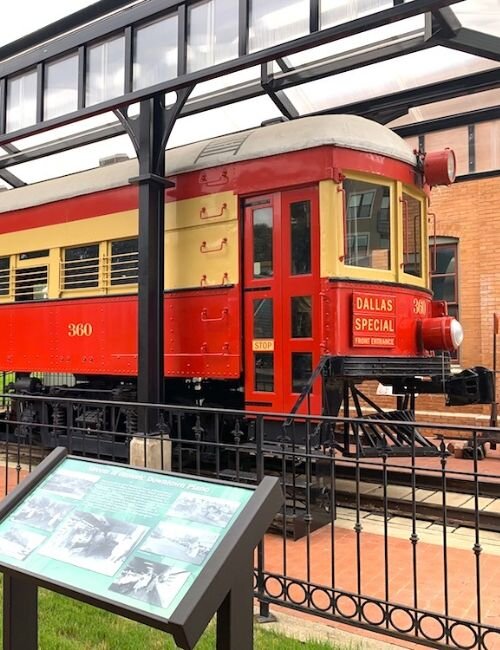
Plano is a busy city in the middle of North Texas that is noted for being family-friendly and having a lot of job options. Safety is a primary issue for both current and potential residents, so it’s helpful to look into Plano’s crime rates and learn about the steps being taken to keep the city secure. This page goes into detail on the most recent statistics, programs, and community efforts that help make Plano a safe place to live, work, and visit. If you’re thinking about moving to Plano or just want to know more about how safe it is, you can find all the information you need right here — and if you’re planning to sell a property before relocating, learn more about how our process works to see how House Buying Heros can help you sell quickly and stress-free.
Key Highlights
- Plano, TX, is recognized for safety. Crime rates are below the national average, driven by community collaboration and policing advancements.
- Community initiatives, like Neighborhood Watch and safety workshops, significantly reduce crime through proactive resident involvement.
- Advanced technology, including predictive analytics and surveillance systems, enhances Plano’s crime prevention and law enforcement efficiency.
- Plano’s property crimes, mainly theft and burglary, are addressed through strategic police-community partnerships and education programs.
- Plano’s comparative safety, especially against cities like Dallas, is reinforced by planned suburban development and active community policing.
Understanding Plano Crime Rates

If you want to know if Plano, Texas is safe, you need to know how the crime rate compares to the surrounding communities. This analysis sheds light on several areas of crime data, giving both current and prospective inhabitants a clear image of what to expect. One way to measure a city’s security is to look at its crime rate trends. In order to assess Plano’s standing, we will compare its crime rate to that of neighboring municipalities. If you are thinking about relocating to or just want to learn more about this suburb in Texas, this information is crucial.
Overview of Crime Statistics in Plano
People often praise Plano for having great neighborhoods and areas, but the city’s crime numbers are all over the place. Planso has a lower crime rate than the national average, according to the most recent NeighborhoodScout crime report. This makes it one of the safer towns in Texas. K To get this safety ranking, you need to know how crime is spread out in the city and its suburbs. When looking at Plano’s crime rate, property crimes, which are less common than dangerous crimes like assault and robbery, make up the majority of crimes. When we look at the Plano crime map, we can see that some places have higher crime rates than others. Parts of the central area often have more theft and vandalism crimes than the quieter suburbs on the edges. However, these small increases in crime happen all the time, and the general safety of the area is still good. Plano residents take security seriously and often work with the police to make their areas safe. Community projects are also very important because they make people more alert and reduce crime rates by a large amount. The contribution of different police tactics affects these crime rates. The Plano Police Department is constantly coming up with new ways to do their job to keep up with changing crime trends. U’s efforts have led to the creation of technology-based ways to stop crime, which has successfully reduced the number of reported incidents. Importantly, these strategies stress the value of community involvement and how important it is for police and residents to work together to keep the area safe. Last but not least, Plano’s crime rates are good news for people who want to settle down in this Texas city.
Comparison with Neighboring Cities
When we juxtapose Plano’s safety profile against those of neighboring cities, a fascinating narrative unfolds. Lano crime rates are largely favorable when compared to cities like Dallas and Fort Worth. His distinction primarily arises from diligent community safety initiatives and the city’s robust law enforcement presence. The crime map of the area highlights how Plano’s suburb-focused development aids in preventing the congregation of crime hotspots that plague larger urban zones. Whereas other metropolitan areas like Dallas often grapple with dense crime clusters, Plano benefits from a dispersal of its population across well-planned neighborhoods. The lower density, along with vigilant residential practices, cultivates a unique community dynamic in which residents are both aware of and active in crime prevention. His effort manifests in lower crime statistics, particularly in property-related crimes like burglaries and vehicle thefts. Digging deeper, it becomes evident that Plano’s approach to combating crime involves leveraging technology and strategic policing methodologies. His approach contrasts with some neighboring cities that may not have integrated tech-driven crime prevention measures as extensively. The result is a more responsive and adaptive law enforcement system that can preempt criminal activities efficiently. Moreover, the city’s effort to engage its residents plays a pivotal role in distinguishing Plano from its neighbors. Conducting regular safety workshops and promoting neighborhood watch programs contribute to a culture of awareness and deterrence, empowering residents to safeguard their communities actively. Comparing crime rates, it’s clear that this community-driven model positions Plano as a forerunner in maintaining safety standards. While Dallas might offer a broader range of urban experiences, Plano beckons with its promise of safety and a tranquil suburban lifestyle. In summation, while Plano’s proximity to larger cities poses potential challenges, its strategic planning and community involvement help maintain its status as a safe suburban haven. By prioritizing community relationships and adopting advanced crime prevention tactics, Plano continues to stand out as a city committed to the safety and well-being of its residents. If you’re a homeowner in the area looking for a quick and simple sale, we buy houses in Plano with no hidden fees or long waiting times.
The Role of Plano Police in Ensuring Safety
Ensuring safety in Plano, Texas, goes beyond statistics; it involves proactive community engagement and the practical work of the Plano Police Department. The police play a critical role in fostering an environment where residents feel secure and protected. Through a combination of community initiatives and technological advancements, the Plano police have managed to maintain low crime rates and enhance overall security. Explore the cost of living in Richardson, TX to understand how nearby cities balance safety, affordability, and quality of life. Delving into these areas, we explore how community engagement initiatives build trust and how technology integration makes policing more efficient in this vibrant city.
Community Engagement Initiatives
The heart of the strategy of the Plano Police Department lies in solid community engagement initiatives, which forge strong connections between law enforcement and the city’s residents. These initiatives are not merely about providing security but about building a community that collaborates towards achieving safety. PPrograms like Neighborhood Watch encourage residents to actively monitor their neighborhoods and promptly report any suspicious activities to the police. His partnership is vital to enhancing the safety and security of Plano’s neighborhoods, facilitating a seamless flow of information that can preemptively curtail potential crime threats. Redemptive community measures, such as safety workshops organized by the police department, empower residents by educating them on personal security practices and crime prevention strategies tailored to their specific neighborhood. These workshops address the unique challenges faced by suburban communities in Texas, engaging with the residents to instill best practices in emergency responses and property protection. Further, the police department organizes regular community meetings, allowing for open dialogues where concerns about safety, local crime patterns, and policing strategies are discussed transparently with residents. Engagement also extends to educational institutions through initiatives like the School Resource Officer (SRO) program. By placing officers within academic settings, the police help in creating a safe learning environment while fostering positive relationships between young residents and law enforcement. It promotes a sense of responsibility among students for community safety and helps dispel any misunderstandings about police roles. Moreover, cultural outreach programs engage with the diverse demographic of Plano’s residents, ensuring that language or cultural barriers do not hinder effective communication between the police and community members. Multilingual officers help in the engagements, ensuring everyone in this Texas area feels valued and heard. Histrategy has shown that it not only increases trust in the police department but also creates community-led initiatives to maintain safety. These engagement efforts collectively enhance the city’s security. When the community and the police department work cohesively, it makes a robust network of vigilance that lowers crime rates and improves the overall quality of living. The commitment of the Plano Police Department to community-oriented policing keeps residents safe and fosters a community spirit that aligns with the city’s broader safety aspirations.
Technological Advancements in Policing
In the realm of modern law enforcement, the integration of technology by the Plano Police has revolutionized the way crime is managed in the area. At the forefront is the deployment of advanced data analytics tools that allow police departments to predict and react promptly to crime trends. By employing predictive policing techniques, law enforcement can strategically focus their resources on potential crime hotspots, thereby preventing crime before it takes place. His use of technology extends beyond data analytics. The implementation of body-worn cameras and dashboard cameras by officers has dramatically increased transparency and accountability, which is crucial for building community trust. These technological enhancements have proven valuable in providing clear, unbiased reports of incidents, fostering a culture of transparency and accountability within the police force. Additionally, the introduction of intelligent surveillance systems equipped with artificial intelligence has enhanced the police’s real-time monitoring capabilities. Strategically placed across Plano, these systems serve as a force multiplier, effectively monitoring larger areas where human supervision would be challenging and resource-intensive. It contributes significantly to the overall safety and security of the region, reassuring residents that their areas are under constant vigilance. Moreover, digital platforms for public interaction have transformed communication between the police department and residents. Online portals and mobile apps facilitate reporting of non-emergency incidents and provide updates on crime trends and safety alerts directly to residents’ devices. His direct line of communication empowers the community, making residents active participants in ensuring a safe environment. The technological journey of the Plano Police Department also includes sophisticated criminal database systems that enable seamless information sharing across departments. These databases allow for quicker investigative processes, enabling the police to connect dots faster and respond more efficiently to unfolding situations. Sharing resources with other Texas law enforcement agencies further strengthens this network, ensuring regional cooperation in law enforcement efforts. Passionately adopting these technological advancements, Plano sets a benchmark for police departments across Texas and the broader area. These efforts enhance safety and refine the approach to crime prevention, showcasing how innovation can lead to safer communities. Ultimately the Plano Police’s readiness to adapt to and integrate new technologies reflects their unwavering commitment to enhancing the safety and security of all who call this city
Analyzing Violent Crime in Plano

Plano, Texas, is often regarded as a relatively safe city, yet understanding the specifics of violent crime requires a more profound analysis. Over the years, crime rates have demonstrated trends and patterns that encourage monitoring and action. Evaluating patterns helps in understanding how safe the area is currently and what measures can be taken to improve safety further. This analysis is crucial for both residents and potential newcomers who are concerned about their home environment. By examining violent crimes through historical data and current strategies, we can gain insights into safety and community well-being.
Trends and Patterns Over Recent Years
To accurately assess violent crime in Plano, Texas, it’s insightful to review the historical trends and emerging patterns that define this area. Recently, the city has demonstrated a noticeable stability concerning violent crime rates, setting it apart from some of the more tumultuous neighboring urban areas. Iring stability can essentially be attributable to the lower density of the population and the robust presence of law enforcement dedicated to the city’s safety. However, the significance of these trends cannot be excused from analysis, as the factors involved are dynamic and necessitate vigilance by both authorities and residents alike. Historically, violent crimes such as assault and robbery have not been prevalent in Plano, especially when compared to larger Texan cities like Dallas or Houston. This distinction arises from the structured nature of Plano’s suburbs, where community-centric living creates a deep sense of security and vigilance among residents. However, it’s crucial to understand that crime does not remain static. Marginal increases in certain types of crimes, such as theft and vandalism, have been noted, albeit nowhere near alarming levels. These instances highlight the necessity of continued monitoring and preventive actions aimed at preserving the quietude for which Plano is known. Neighborhood Scout reports inform these observations, providing valuable data on crime rates and safety comparisons. The reports often indicate how and where crime spikes in specific areas within the city, thus enabling targeted actions by local law enforcement. Plano is mostly free of high-risk areas that are often linked to violent crime, but some central areas do see an increase from time to time. These patterns generally correlate with periods of increased economic activity or population fluidity, where new residents move in, briefly impacting the time statistics. On Nonetheless, any fluctuations in crime data should not spark a widespread panic among the residents. Instead, they call for a pragmatic approach grounded in collaborative efforts between the community and police service. Such an approach ensures that Plano retains its reputation as a safe suburban haven in Texas. Continuing these practices, along with the integration of innovative policing strategies and technology, will be key to preserving and potentially improving Plano’s current crime statistics. In conclusion, understanding the nuances of violent crime in Plano involves examining both historical data and current patterns. By doing so, residents and potential newcomers can appreciate that, although the city’s crime rate is generally favorable, awareness and community engagement are essential for maintaining this safety. he Ongoing commitment from authorities and the community alike ensures that Plano’s safety is perpetually a priority.
Measures to Reduce Violent Crime
Plano has strategically implemented a variety of measures to sustain and potentially reduce violent crime. The Plano Police Department’s proactive approach is key; it aims to fight crime and involve the community in the solution. The department’s commitment to innovative policing, particularly through tech advancements, plays a crucial role in preemptive crime mitigation efforts. Data-driven approaches offer recommendations for where resources are best allocated, ensuring that potential crime areas receive focused attention and response. The role of technology extends beyond operational enhancement and includes fostering community connection, which is an integral aspect of modern policing. The Plano police have embraced digital tools, such as apps and online platforms, which facilitate the reporting of crimes and allow residents to receive updates on local safety concerns. These measures enhance responsiveness and empower the community to participate actively in crime prevention. It is a commitment that fosters trust between the police and residents, a relationship crucial for effectively reducing crime in a meaningful way. Community engagement remains at the heart of Plano’s strategy to curtail violent crime. Programs like Neighborhood Watch are active across the city, encouraging vigilance and prompt reporting of suspicious activities. Isroots’ involvement creates a robust network of informed residents who work collectively with law enforcement to maintain neighborhood safety. Educational initiatives aim to further this cooperation, with regular safety workshops and crime prevention seminars tailored to the local populace. These programs help residents understand how their personal actions contribute to the broader safety of the community. Plano’s toolkit for reducing violent crime includes another initiative that emphasizes visibility and presence. Through increased patrolling and strategic policing, the city’s authorities ensure that law enforcement is both seen and accessible. Visibility acts not only as a deterrent to potential criminals but also reassures residents, reinforcing the notion that the city’s safety is a shared priority. The collaborative nature of these policing efforts is essential to addressing the specific needs and concerns of Plano’s diverse communities. Ultimately, these measures to curb violent crime align with the broader objectives of maintaining a safe living environment for all residents and conveying a clear message that safety is a shared concern, encompassing both individual actions and community-wide initiatives. With such a comprehensive approach, Plano continues to uphold its standing as one of the safer cities in Texas, demonstrating how strategic, community-oriented policing can yield positive, lasting results within urban settings. If you live nearby and plan to move soon, you can sell your Royse City house faster through House Buying Heros for a smooth and fast-selling experience.”
Property Crime Insights

In order to gauge the level of safety in Plano, it is essential to comprehend the nature of property crime. Crimes against property, which include acts of vandalism and theft, undermine the safety and security of locals. Plano has implemented measures to control and lessen the impact of the high crime rates associated with these non-violent offenses. We can have a better picture of the city’s efforts to improve safety and security for everyone if we look at typical forms of property crime, the steps taken to prevent them, and the impact these actions have on locals.
Common Types of Property Crime
Property crime in Plano, Texas, largely revolves around non-violent offenses that affect residents’ homes and personal belongings. The most prevalent type of property crime here is theft, typically manifesting as burglary, larceny, and motor vehicle theft. These crimes pose considerable concern, as they directly impact the sense of safety within the community. And despite its reputation for being a relatively safe city, it still experiences these crimes that require ongoing attention and effective preventive strategies. Substantiation of property crime incidents involves burglary, which includes unlawful entry into homes or businesses with the intent to commit theft. This type of crime significantly affects residents’ perception of safety, making it imperative to install robust home security systems and community vigilance. Public reports often highlight burglary hotspots in the city, especially in areas that experience less foot traffic at certain times of the day. Larceny, which encompasses various forms of theft such as shoplifting, theft from motor vehicles, and theft of bicycles, accounts for a large percentage of property crimes in Plano. Retail areas and parking lots are particularly vulnerable to such crimes, requiring businesses to adopt advanced security measures like surveillance cameras and on-site security personnel. Community policing initiatives play a vital role in mitigating these risks by promoting awareness and encouraging residents to report suspicious activities. Motor vehicle theft is another significant concern, albeit less frequent than other forms of property crime in Plano. a Owners are encouraged to utilize anti-theft devices and practice simple, straightforward preventive measures, such as locking doors and not leaving keys inside the vehicle, to deter potential criminals. These actions, combined with strategic patrolling by local law enforcement, contribute to reducing vehicle-related crime rates. In response to property crime, the Plano Police Department collaborates closely with community members to implement effective crime prevention programs. Neighborhood Watch schemes are prevalent, fostering a proactive stance where residents collectively monitor their areas for unusual activities. Additionally, educational workshops conducted by law enforcement help inform residents about property crime trends and the latest security technologies available to protect their homes and businesses. Residents proactively engage in these initiatives, indicating a shared commitment to enhancing the safety and security of their communities. Overall, while property crime in Plano presents challenges, ongoing efforts by both citizens and the police aim to tackle these issues head-on. By implementing security measures and community awareness programs and fostering a collaborative approach to safety, Plano continues to mark progress in reducing property crime incidence. Dynamic response shapes a positive trajectory for the city’s safety landscape, reflecting its status as a relatively safe environment for everyone.
To sum up, Plano, TX, is a town that stands out for its emphasis on safety and well-being, making it appealing to both families and professionals. Home prices are continuously lower than the national average, allowing residents to live a comfortable lifestyle without worrying about their finances. Maintaining public safety is a top priority for the city, and it shows in its dedication to law enforcement, community involvement, and preventative measures. Plano is more than just a housing market; it’s a safe haven where people may grow and prosper. If you’re ready to make a move or have questions about selling your home, don’t hesitate to reach out to House Buying Heros for expert assistance. To make better relocation selections, it is helpful to review neighborhood-specific data and local efforts.
Helpful Plano Blog Articles

